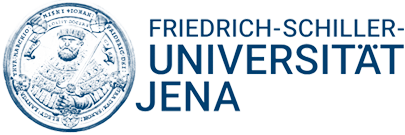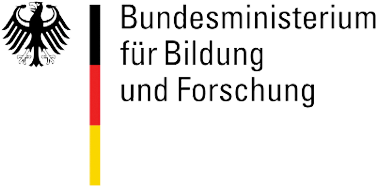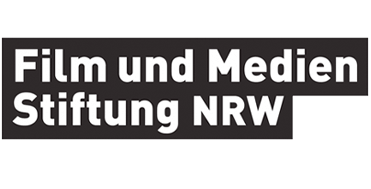Downloadbereich und Literatur
Wir freuen uns, Ihre Fragen zur Tele-Ergotherapie, aktuellen Forschungs- und Entwicklungsprojekten und zu unseren Softwarelösungen beantworten zu dürfen.
Ihre Ansprechpartner



Ihre Vorteile
- BG Beantragung durch uns
- Schnelle Bearbeitung
- Begleitung durch unsere Ergotherapeuten
- Langfristige Betreuung (Ø 6 Monate)
- Einfache Verlängerung
- Austausch beim Peer-To-Peer Coaching
Unsere Erfahrung
- Forschung seit 2013
- Anerkanntes Medizinprodukt
- Gefördert durch das Land NRW & EU
- Interdisziplinarisches Team
- Betreut durch Ärzte & Therapeuten
- ständige Weiterentwicklung
Publikationen
The PACT trial: Patient Centered Telerehabilitation: effectiveness of software-supported and traditional mirror therapy in patients with phantom limb pain following lower limb amputation: protocol of a multicentre randomised controlled trial.
Rothgangel AS, Braun S, Schulz RJ, Kraemer M, de Witte L, Beurskens A, Smeets RJ, 2015
Design and Development of a Telerehabilitation Platform for Patients With Phantom Limb Pain: A User-Centered Approach.
Rothgangel A, Braun S, Smeets R, Beurskens A, 2017
Traditional and augmented reality mirror therapy for patients with chronic phantom limb pain (PACT study): results of a three-group, multicentre single-blind randomized controlled trial.
Rothgangel A, Braun S, Winkens B, Beurskens A, Smeets R, 2018
Treating Phantom Limb Pain Following Amputtation – The potential role of a traditional and teletreatment approach to mirror therapy
Rothgangel A, Dissertation, 2019
CRPS goes gaming – Entwicklung eines digitalen Nachsorgekonzeptes für Patienten mit Komplex Regionalem Schmerzsyndrom
Papenhoff MC, Michaelis I, Waggeling V, Wosnitzka M, 2019
Literatur
Phantomschmerzen
Nachweise Wirksamkeit Routine Phantomschmerz
PDF, 91 KB
Praxisleitfaden Spiegeltherapie Phantomschmerzen
PDF, 1,2 MB
HandReha & CRPS
Patientenmanual Routine HandReha & CRPS
PDF, 622 KB
Allgemeine Literatur zum Nachweis der Evidenz
- Birklein F et al. (2018), Diagnostik und Therapie komplexer regionaler Schmerzsyndrome (CRPS), S1-Leitlinie. Deutsche Gesellschaft für Neurologie (Hrsg.), Leitlinien für Diagnostik und Therapie in der Neurologie.
- Simmel S, Self-Marzi A. Schmerzrehabilitation beim CRPS. Rehabilitation 2019; 58:200-214
- Moseley GL (2004). Graded motor imagery is effective for long-standing complex regional pain syndrome: a randomised controlled trial. Pain; 108: 192-8.
- Moseley GL (2006). Graded motorimagery for pathologic pain: a randomized controlled trial. Neurology; 67; 2129-34.
- Cacchio A, De Blasis E, Necozione S et al. (2009). Mirror therapy for chronic complex regional pain syndrome type 1 and stroke. NEngl JMed; 361:634–636
- Erpelding N et al. (2016). Rapid treatment-induced brain changes in pediatric CRPS. Brain Struc Funct; 1095–111.
- McCabe CS et al. (2008). Mirror visual feedback for treatment of CRPS (type 1). Curr Pain Headache Rep; 12 (2): 103–7.
- Jäning W, Schaumann W, Vogt W (2013). Suva Care. CRPS Complex regional pain syndrom.
- Moseley GL (2004). Graded motor imagery is effective for long standing complex regional pain syndrome: a randomized controlledtrial. Pain. 108; 192 –198.
- Moseley GL (2005). Issuccessful rehabilitation of complex regional pain syndrome due to sustained attention to the affected limb? A randomised clinical trial. Pain. 114; 54 –61.
- Flor H, Diers M, Andoh J (2013). The neural basis of phantom limb pain. Trends in Cognitive Sciences July; 17(7): 307-308.
- Hsiao A, York R, Hsiao I, Hansen E, Hays RD, Ives J, Coulter ID (2012). A randomized controlled study to Evaluate the Efficacy of Noninvasive Limb Cover for Chronic Phantom Limb Pain Among Veteran Amputees. Arch Phys Med, 93(4): 617-22.
- Braun S, Kleynen M, Schols J, Schack T, Beurskens A (2008). Using mental practice in stroke rehabilitation: a framework. Clinical Rehablitation; 22(7): 579-591.
- Devan H, Suganthini P (2012). Effects of motor imagery in phantom limb pain management following amputation: A review of literature. Indian Journal of Physiotherapy & Occupational Therapy; 6(2).
- Takted K (2004). The effects of mental imagery on the acquisition of motor skills an performance. A literature review with theoretical implications. Journal of Menal Imagery.
- Martin KA, Moritz SE, Hall CR (1999). Imagery use in sport: A literature review and applied model . The sport psychologist; 13(3): 245-268.
- MacIver K, Lloyd DM, Kelly S, Roberts N, Nurmikko T (2008). Phantom limb pain, cortical reorganization and the therapeutic effect of mental imagery. Brain; 131(8): 2181-2191.
Wissenschafliche Partner




Klinische Partner


Gefördert durch




